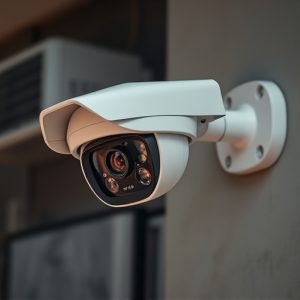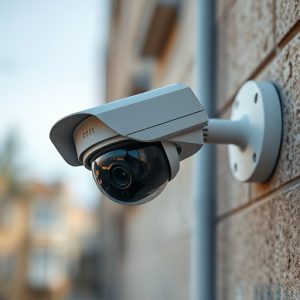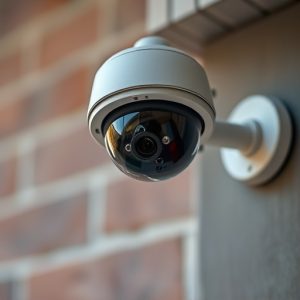Unmasking Deception: Navigating Risks of Fake Security Camera Placement
Sophisticated fake security monitoring devices, particularly misleadingly placed cameras, have becom…….
Sophisticated fake security monitoring devices, particularly misleadingly placed cameras, have become a growing concern for personal and business safety. These fakes create a false sense of security, with strategic height placement at eye level or low to deter crime by making intruders feel visible. Recognizing these deceptions involves understanding legitimate camera placement guidelines, which vary by region and are crucial for privacy protection. Compliance with local laws and industry standards ensures ethical use without legal repercussions. Effective security combines authentic fake cameras strategically placed at varied heights near entry points, regular maintenance, and robust alarm systems to enhance overall safety.
In an era where security is paramount, the rise of fake security monitoring devices poses a significant concern. This article delves into the intricate world of these fraudulent setups, exploring the psychological tactics behind their placement and the critical factors to consider. From understanding the legal implications to implementing effective preventive measures, we uncover red flags like unusual camera heights, offering practical insights for securing your space against these deceptive devices.
- Understanding Fake Security Devices: A Growing Concern
- The Psychology Behind Effective Camera Placement
- Uncovering Red Flags: How to Spot Fake Cameras
- Legal Implications and Industry Standards
- Preventive Measures: Securing Your Space Effectively
Understanding Fake Security Devices: A Growing Concern
In recent years, the rise in sophisticated fake security monitoring devices has become a growing concern for both individuals and businesses alike. These fraudulent systems, often mimicking legitimate security equipment, are designed to deceive and manipulate unsuspecting owners. One of the most prevalent deceptions revolves around fake security cameras, particularly their strategic placement, such as at eye level or in concealed areas, to instill a false sense of protection.
The issue extends beyond mere deception; these counterfeit devices can create a false sense of security, leading to potential risks and vulnerabilities. Consumers must be vigilant and well-informed about the potential for such scams, ensuring they verify the authenticity of any security setup before investing in it. Staying ahead of these fraudulent practices is essential to safeguarding personal and financial safety in an increasingly digital world.
The Psychology Behind Effective Camera Placement
The placement of security cameras plays a significant role in deterring potential intruders and creating a sense of safety. Psychology studies have shown that the strategic positioning of fake security devices, such as cameras, can significantly impact human behavior. When designing a security system, considering the psychological aspects of camera height is crucial.
Research suggests that placing fake security cameras at eye level or slightly elevated positions can be incredibly effective in deterring crime. This is because it creates an illusion of constant surveillance, making intruders feel more visible and exposed. By mimicking real security measures, these strategically placed devices send a powerful message, encouraging potential criminals to choose alternative routes or opt for easier targets. The human tendency to avoid being watched can be leveraged to enhance the overall security of a property.
Uncovering Red Flags: How to Spot Fake Cameras
When it comes to identifying fake security monitoring devices, one of the most obvious red flags is the camera’s placement. Legitimate security cameras are strategically positioned to provide comprehensive coverage, often mounted at a suitable height to capture clear images. Keep an eye out for low-hanging or awkwardly placed cameras, as they might indicate a fraudulent setup. For instance, a camera attached to a pole in an unusual angle or too close to the ground could be a fake, designed to trick viewers into thinking it offers real surveillance.
Additionally, manufacturers of genuine security equipment adhere to specific guidelines and regulations regarding camera height placement for optimal visibility and privacy. Cameras installed at the wrong height, whether too low or unreasonably high, may raise suspicions. It’s important to research and understand the recommended positioning for outdoor and indoor cameras to spot any inconsistencies in a proposed setup, helping you avoid potential security risks and fake devices.
Legal Implications and Industry Standards
The legal implications of setting up fake security monitoring devices, including dummy cameras, are vast and can vary significantly across jurisdictions. In many countries, it’s illegal to mislead or deceive others by representing a functional security system as active when it’s not. Installing fake cameras at improper heights, for instance, could be considered fraudulent activity if done with the intent to induce a false sense of security. Industry standards emphasize ethical practices and transparency; manufacturers often provide guidelines on camera placement, including recommended heights for optimal viewing angles, to ensure legitimate use.
Compliance with local laws and industry best practices is crucial to avoid legal repercussions. Some regions have specific regulations about the placement of security cameras, including restrictions on height and visibility to respect privacy rights. Proper fake camera setup involves placing them strategically to mimic a genuine security system without compromising privacy or violating any laws. This includes adhering to recommended heights for real cameras, typically ensuring clear lines of sight while avoiding areas that could obstruct views or infringe upon personal spaces.
Preventive Measures: Securing Your Space Effectively
Securing your space effectively involves taking proactive measures to deter potential intruders, and a crucial aspect is strategic placement of fake security monitoring devices. One key element to consider is the fake security camera height placement. Mounting cameras at various heights creates an illusion of comprehensive surveillance, making it harder for criminals to avoid detection. Positioning them in plain sight, especially near entry points like doors and windows, sends a strong signal that your property is under constant observation.
Additionally, ensure that these fake security devices are visible and well-maintained. Regularly cleaning and testing them maintains their authenticity, deterring would-be thieves who might otherwise dismiss them as outdated or inoperable. Combining these preventative measures with robust alarm systems and other security features can dramatically enhance the safety of your space.
In conclusion, the prevalence of fake security monitoring devices poses a significant challenge, requiring heightened awareness and proactive measures. By understanding the psychological tactics behind their placement, recognizing common red flags like irregular camera heights, and adhering to legal standards, individuals can protect themselves from potential security breaches. Implementing preventive strategies discussed in this article will ensure that your space remains secure, free from the tricks of fake security setups.


